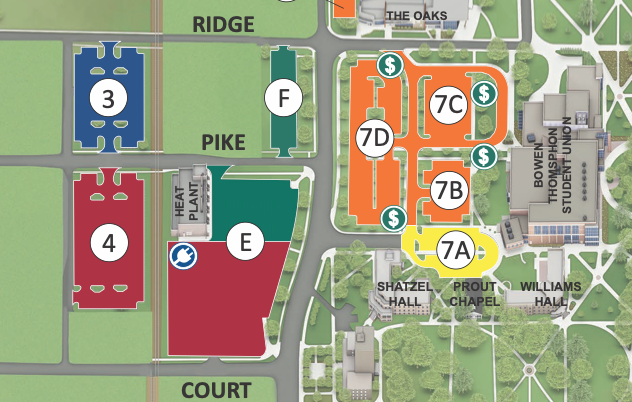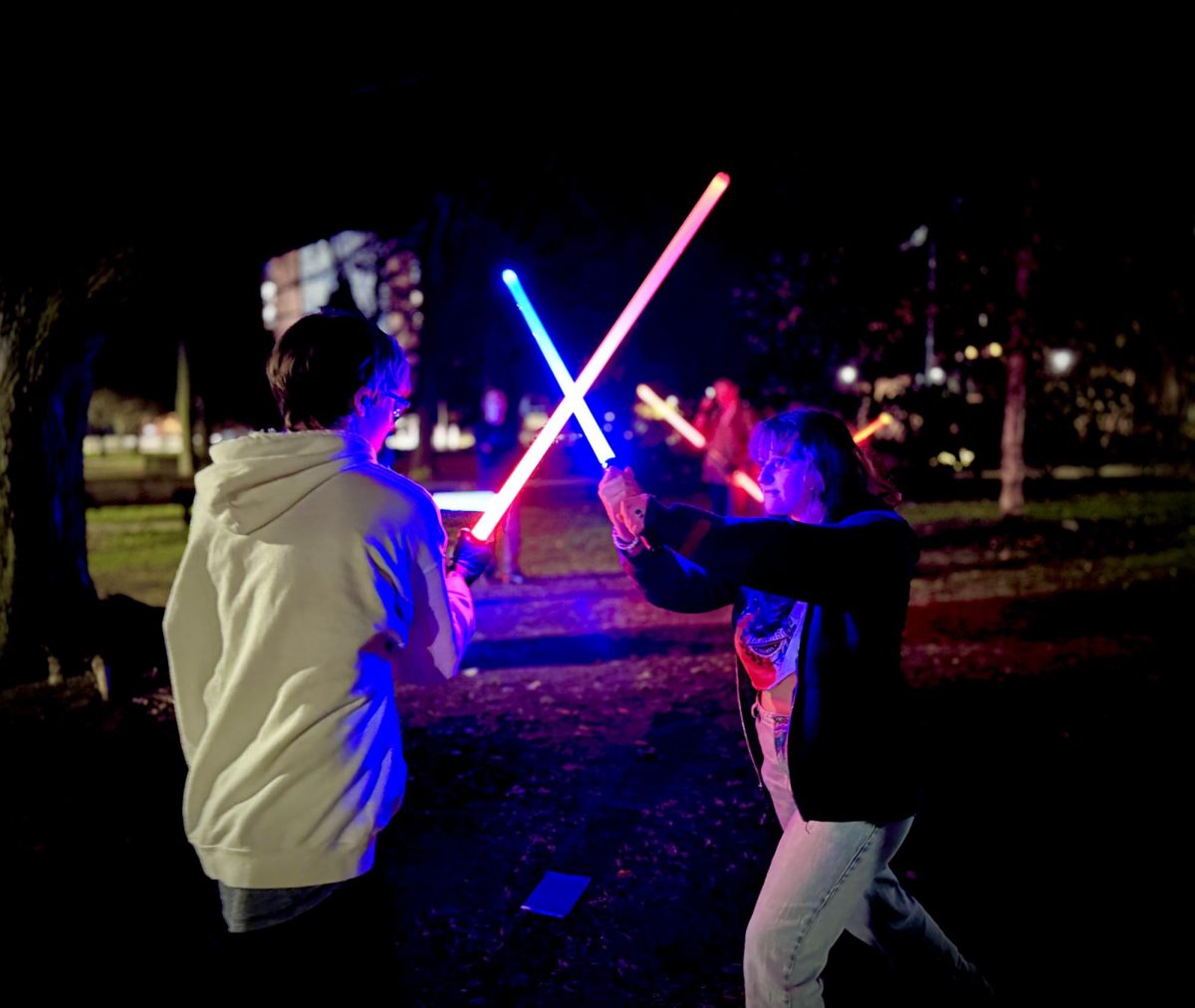The University seal, while located in a highly-trafficked spot of campus, remains an enigma to many.
Enveloped under trees, the seal lies in the heart of “old campus,” placed in the center of a miniature oval with intersecting paths.
It’s circled by both a brick path and an even smaller ring of flowers and lies adjacent to the “Metamorphosis” statue.
To the North of it is the Administration Building. To the South, University Hall; to the East, the Union; and to the West, McFall Center.
Even though students pass by the seal on a daily basis, they might not understand the history or legends surrounding it, said Amy West, communications manager in the department of Marketing and Communications.
West’s department has taken several steps to inform the University community of its history and traditions, including those revolving around the seal. In the process, West said she has even learned things even she didn’t know.
“I had no idea there were all these legends,” she said. “It’s something we should put out there every so often so people at our University know our history.”
Approaching its 100 year birthday, the seal is almost as old as the University itself.
In 1914, Leon Winslow, a professor in the industrial arts department designed the seal, according to University Archives website.
For a guide, he used the design of “The Great Seal of the State of Ohio,” which features a sheaf of wheat to signify the great agricultural industry of the state; a cluster of seventeen arrows, representing Ohio’s rank in the Union; Mount Logan; a rising sun with thirteen rays representing the original thirteen states; and the Scioto River.
The University seal, while similar to Ohio’s, is divided into four sections.
First, there is the mountain range, a symbol for something beyond to strive for. The second section is the sun, signifying that the new Normal College was the rising sun of a great institution of learning. The third section is the bundle of 17 arrows and lastly there is the sheaf of wheat.
The seal has changed throughout it’s years at the University.
Today, surrounding the seal are the words in Gothic capitals: “Bowling Green State University. 1910.” But the words used to read, “Bowling Green State Normal College.” In 1958, Glenn Christian, University purchasing officer, added the buckeye and the carnation, which are the state tree and state flower respectively.
University seals are used for official documents and publications, according to “The History of BGSU,” by James Robert Overman. For instance, it’s placed upon all diplomas.
The purpose for the seal, as the designer himself puts it, is to have something by which the University can be recognized, making the institution “valid.”
“Today most manufacturing concerns believe that it pays to have a trademark. Likewise, institutions of learning have their marks or emblems by which they are known,” said Winslow as he presented the seal to the trustees, according to Overman’s’ book. “Though the values placed upon the seals is conventional, yet customs has come to demand them as marks of authority.”
The seal not only comes with history, but also several myths and legends.
There are four, the first two concern relationships while the second two concern academics.
Those who toured the University may be familiar with these myths, as the tour guides finish each tour with an explanation of the seal.
“That’s kind of our little closure moment,” said sophomore Claire Long, a University tour guide.
First, if two significant others stand on the seal at midnight and kiss, they will be married. Conversely, if the two are holding hands and let go while walking around opposite sides of the seal, they will soon break up.
Those touring the University like the first part the most, Long said.
“It’s kind of cutesy and adorable,” she said. “The dads are always looking at their daughters.”
And there might be some truth to the myth regarding the midnight kiss. While there’s no answer to how many have stood on the seal and kissed, 25 percent of University alumni are Falcon Flames, West said. Currently, there are 10,000 living University couples.
But Long said she often gets the most reaction from those on tours when she tells them the part about couples breaking up, especially those who brought their significant others.
“They really like the second one because it’s comical,” Long said.
For the second set of myths concerning one’s academics, students are advised to pass to the right of the seal if they want to pass their next exam. The consequences of passing to the left involve failing the next exam.
“I’ve always … made sure to walk to the right, even though it’s a superstition and I’m not a superstitious person,” Long said. “I don’t want to mess with the BG gods.”













